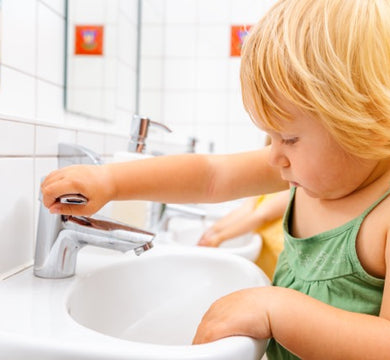A Practical Guide for Parents and School Communities
When parents hear about lead in school drinking water, it can feel overwhelming. But understanding why lead shows up in school plumbing is the first step toward improving water safety. In most cases, lead contamination isn’t caused by a single problem—it’s a combination of aging materials, water chemistry, and how often water sits unused.
Here’s a simple, practical guide for parents and school communities.
1. Aging Plumbing Materials Inside and Outside the School
Most schools do not have long stretches of “lead pipes” running through the building. But many do have older plumbing components that contain small amounts of lead, especially if the school was built before 1986.
Common sources of lead in school plumbing include:
-
Lead service line (LSL): the pipe that brings water from the street into the school
-
Lead-based solder (used to join copper pipes before 1986)
-
Brass and bronze fixtures, including drinking fountains, bottle fillers, and classroom sinks
As these components age, corrosion can release lead particles or dissolved lead into drinking water.
2. Water Stagnation (The #1 Driver of Lead Levels)
The biggest cause of elevated lead in school water is not necessarily the materials themselves—it’s water sitting still in the plumbing for long periods.
Schools naturally experience:
-
Weekend and evening downtime
-
Long holiday breaks
-
Sinks and fountains that are rarely used
-
Seasonal closures
When water stagnates, it has more time to absorb lead from pipes, solder, or older fixtures. This is why many schools see higher lead levels after weekends or breaks.
3. Water Chemistry and Corrosion Control
Cities add corrosion inhibitors to keep water safe as it travels through distribution systems. However, the protective layer these chemicals create can break down when:
-
Water doesn’t move regularly
-
Pipes or fixtures are very old
-
Coatings inside fixtures wear off
-
The plumbing system has scale or mineral buildup
Even well-treated municipal water can pick up lead once it enters an older school building.
4. Older Drinking Fountains and Classroom Fixtures
Many schools still use drinking fountains and classroom sinks installed decades ago. Over time:
-
Internal components degrade
-
Protective coatings wear down
-
Aerators trap and release particles
These fixtures are common contributors to lead in school drinking fountains and classroom sinks.
5. Limited Maintenance Time and Resources
School facility teams work hard with limited budgets and a long list of responsibilities. This often means:
-
Manual flushing is inconsistent
-
Fixture replacement is delayed
-
Diagnostic testing is infrequent
-
Real-time monitoring is rare
These challenges aren’t due to lack of effort—they reflect the reality in many schools today.
What Parents Can Ask Their School
You don’t need to be a water expert to protect your child. Here are simple, effective questions:
1. Ask About Recent Testing
-
When was the last lead test performed?
-
What fixtures showed elevated levels?
-
What steps were taken afterward?
2. Ask About Daily Practices
-
Is there a flushing routine after weekends or breaks?
-
Are unused fixtures turned off, replaced, or monitored?
3. Ask About Long-Term Improvements
-
Are outdated fountains or sinks being upgraded?
-
Are they considering automated flushing or monitoring?
A Consistent Way to Reduce Stagnation in Schools
Because water stagnation is the leading cause of elevated lead levels in schools, maintaining regular flushing is key. Manual flushing can help, but it’s often inconsistent—for example, after weekends, holidays, or in areas of the building that aren’t used often.
This is where automated flushing can make a measurable difference. The Noah System automatically moves water through school pipes on a schedule, helping maintain water quality without the burden of daily labor. It supports existing safety programs, complements corrosion control, and helps schools prevent stagnation across the entire building.
For schools looking to improve long-term water safety without adding more work for staff, automation can be a practical next step.
A Final Thought
Lead in school water systems isn’t inevitable. It’s a preventable, manageable issue when schools understand the root causes and take consistent action. By staying informed, parents can help ensure that every child has access to clean, safe water at school—every day.


